Meet the Singaporean chef whose approach to food is ‘borderless’
In this week's Creative Capital, CNA Lifestyle gets to know Ethan Khoo, whose culinary journey includes local establishments such as Morsels, Pollen and Les Amis, as well as Clooney, a three-hatted fine dining restaurant in New Zealand.
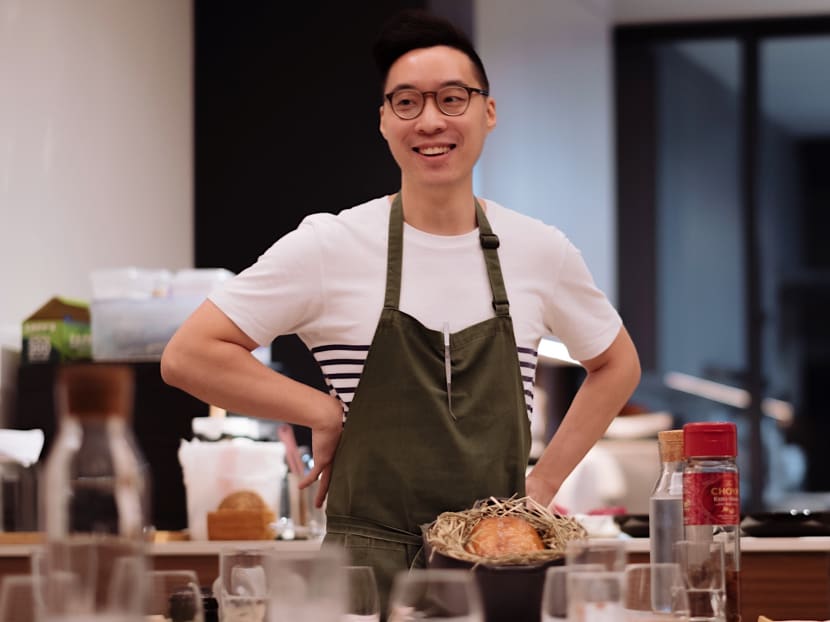
Ethan Khoo (Photo: Ethan Khoo)
Towards the end of last year, a former colleague, who is a serious and passionate foodie, messaged me about kanves, a new private dining establishment, she visited. She had lucked out and because one of her friends was friends with the chef, they went for an early preview. She raved about the young chef Ethan Khoo and the dishes he was serving. I immediately messaged him via Instagram and begged for a slot.
I’ve since been to kanves three times. It is, in my books, one of the very best—if not the best—modern private dining experience in Singapore. Ethan’s dishes are unique, creative, and most importantly, absolutely delicious.
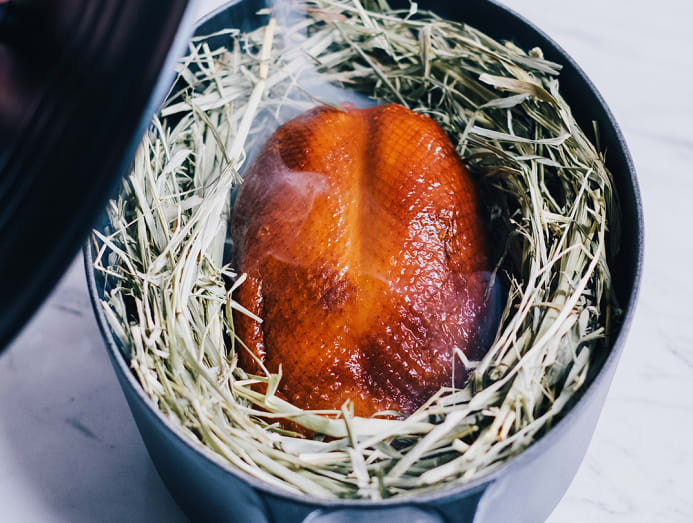
This quiet and proper 31-year-old, who trained at local establishments such as Morsels, Pollen and Les Amis, was, before returning to Singapore, working at a three-hatted (the Antipodean equivalent of three Michelin stars) fine dining restaurant in Auckland, New Zealand. Unfortunately, Clooney closed in late 2019 and instead of venturing the California for more experiences, Khoo, partly due to the pandemic has stayed home. And, to the pleasure of local foodies, been wowing us ever since he opened kanves.
HI ETHAN, WERE YOU A FOODIE GROWING UP?
A hundred per cent! My parents were always of the belief that children should try everything when they’re young. In truth, I think it was because they didn’t want us to limit their dining preferences because they were foodies too. But that meant that we were always brought along to restaurants, even fine dining establishments, during our travels.
WHAT WAS YOUR FONDEST FOODIE CHILDHOOD MEMORY?
My fondest memory would be following my mum and helper around in the kitchen, observing them preparing and cooking our meals, especially when it came to preparing our heritage Hokkien style popiah recipe that has been passed down through the generations. I’m actually hoping to feature this heritage dish in a charity fundraising initiative in the future.
HOW DID YOU END UP PURSUING A CAREER IN CULINARY?
After graduating from the University of Melbourne with a Commerce degree in Finance and Marketing, I persuaded my parents to allow me to take a gap year in 2014 to dip my toes in the culinary world. This was my opportunity to see if the culinary world was something I really wanted to make a career out of.
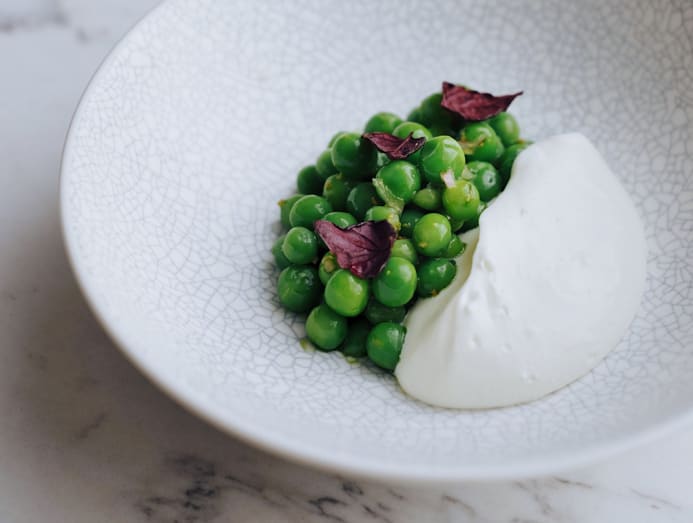
WHAT DID YOUR PARENTS THINK OF YOUR CAREER CHOICE?
As with most Asian parents, they were initially hesitant about my decision. I mean I understood their hesitance and worries, as they knew how taxing being a chef can be: the extremely long working hours, little to no social life, and little pay. Parents only want the best for their kids, and they wanted to be sure that I knew what I was getting myself into. That’s why I was met with resistance when I initially told them that I wanted to enrol into culinary school instead of university. They felt that it was better to have a degree as a fall-back plan, if a career in culinary didn’t quite work out.
That being said, my parents have been immensely supportive throughout, even to the extent of providing their home for me to operate kanves.
WHERE DID YOU BEGIN YOUR TRAINING HERE AND WHAT LESSONS DID YOU LEARN THERE
Without any formal culinary training, it was slightly challenging entering the industry. However, thanks to some connections, a family friend connected me with Chef Petrina of Morsels, a great little restaurant in Little India, which is now located at Dempsey. That was my first foray into a professional kitchen.
My biggest takeaways were the stringent organisational skills which rang true to my own OCD-ness. This had set me up to be the chef that I am today as it was ingrained into my work ethic to be meticulous, precise and always organised in whatever I do, no matter how trivial the task.
Being a one-man show running kanves, I would not be able to smoothly orchestrate the execution of the menu if it weren’t for being this organised.
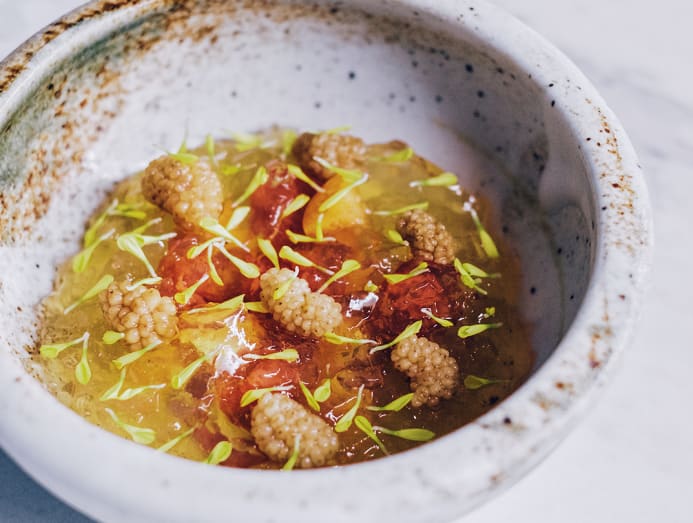
WHY GO OVERSEAS TO FURTHER YOUR CAREER?
I wanted to be pushed outside of my comfort zone, to experience a different format of how kitchens are run in a different country. But more importantly to work in a place that experiences all four seasons, to be immersed in true seasonality where you’re forced to only use the local and season-focused produce—something which I feel restaurants in Singapore may sometimes take for granted when you can import literally anything from either hemisphere.
WAS IT EASY OR DIFFICULT TO MOVE TO NEW ZEALAND TO LIVE AND WORK?
It definitely wasn’t the easiest. The biggest hurdle was getting my work visa approved, which involved many supporting documents including testimonials from many of the restaurants I had previously worked for to prove my competence since I had no formal certification in terms of a culinary diploma or degree.
Finding an appropriate accommodation within walking distance from the restaurant was also challenging. Thankfully, the owner of the restaurant, Tony Stewart of Clooney Restaurant, was kind enough to offer me a temporary place to put up with for free while I searched for a more permanent lodging. I was also very blessed to form really close bonds with the people I worked with at Clooney, two of which became my housemates.
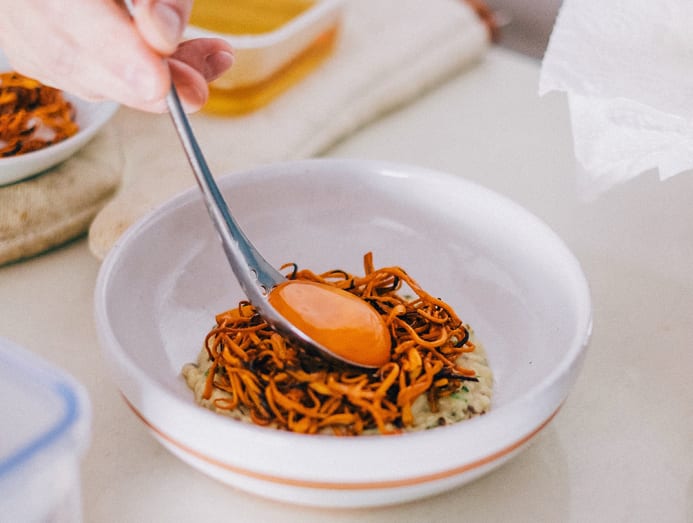
WHAT DID YOU MISS MOST WHEN YOU WERE OVERSEAS?
The easy access to local Singaporean food! That was probably what made me homesick the most. In fact, I would cook local Singaporean dishes for our staff meal in the kitchen, exposing our culturally- diversified kitchen crew to local flavours that I grew up with, such as ayam sioh, nasi lemak, laksa and even ngoh hiang. I remember even making Shanghainese Zha Jiang Mian, right down to making the handmade noodles—a nod to my Shanghainese roots. I’m really thankful to have had access to well stocked Asian grocers in New Zealand that allowed me to achieve those authentic flavours – truly a small taste of home.
HOW DID THE EXPERIENCE THERE SHAPE WHO YOU ARE, AS A PERSON AND AS A CHEF?
Having to live in another country without many familiar faces, your kitchen family becomes your family.
I think working at Clooney really taught me the importance of being flexible, open-minded and leading by example, especially with a kitchen team comprising chefs with different cultural backgrounds, personalities and where English may not even be their first language.
As a junior sous chef at Clooney, part of my job scope was managing the kitchen team. As it was my first time holding a leadership position, there were times where I found it challenging trying to navigate the different personalities and cultural differences, and I learnt that a leader should never be afraid to do the grunt work, like washing the dishes, mopping the floors, throwing out the trash. In fact, doing those things actually that earned me the team’s respect. That was my biggest takeaway from working in New Zealand.
IF THE RESTAURANT YOU WERE WORKING AT DIDN’T CLOSE, DO YOU THINK YOU WOULD HAVE STILL COME BACK?
Yes, I would still have. I had the intention to work in the USA, especially the West Coast, to gain a different perspective. I identified with modern American cuisine, where produce was king and food wasn’t really defined by a specific cuisine style, but rather multicultural influences. This resonates with my cooking style.
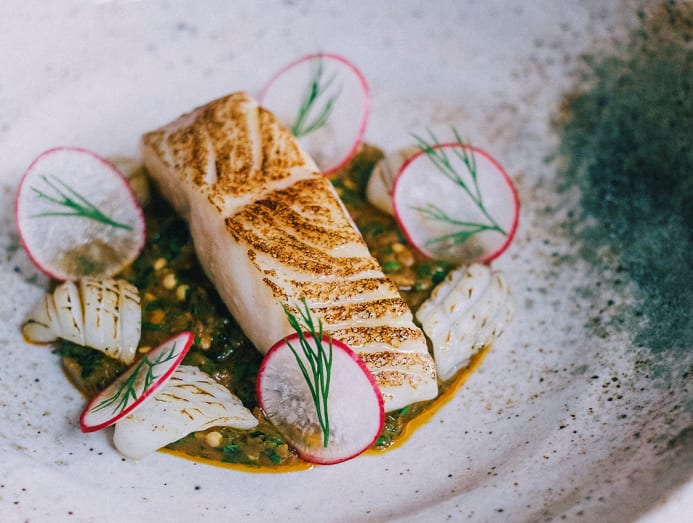
WHAT ARE YOUR IMPRESSIONS OF THE LOCAL DINING SCENE?
I think the local dining scene has come quite far, from back in the days when I used to work at Pollen. It’s definitely more vibrant and varied in its offerings. For example, I see a lot more restaurants championing local or native cuisines in a contemporary way. The local food scene has also become more competitive with the entrance of the Michelin Food Guide in the last few years. The rise of home-based and private dining establishments also lends to the vibrancy of Singapore’s local dining scene.
WHY OPEN YOUR OWN PRIVATE DINING INSTEAD OF WORKING AT A RESTAURANT WHEN YOU RETURNED?
Now in my thirties, I’ve come to realise that after a few years working for someone and executing someone else’s menu, it’s about time to establish a direction of my own. Private home dining offers me an avenue to explore my own cooking philosophy. It allows me to boldly experiment with new ingredients, new flavours, new combinations, while allowing me to learn from my mistakes.
WHAT GAVE YOU THE CONFIDENCE TO DO SOMETHING ON YOUR OWN?
I’m really very blessed to have supportive parents in my journey as a chef.
I think being at home, in my playground, also gives me the opportunity to make mistakes and explore. It’s a safe space to explore and experiment, without any obligations to stakeholders and employees. Essentially, I can just focus on the food. The customers are also more receptive to different experiences compared to restaurants.
HOW WOULD YOU DESCRIBE YOUR FOOD?
I would say that it’s contemporary in nature, globally influenced and where less is more. Focusing on usually not more than four main components and layering flavours through the processes behind each element, I try to highlight and showcase more local produce, which if treated the right way, I feel can be elevated to a level comparable to imported produce which people often perceive to be a better product.
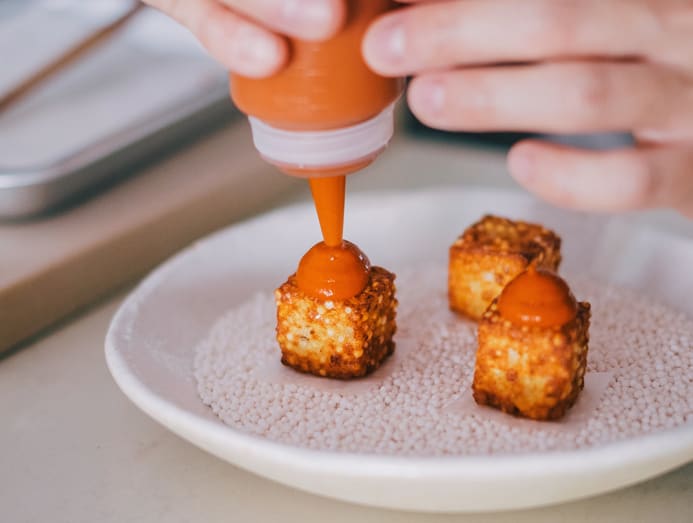
HOW DID YOU BUILD YOUR CUSTOMER BASE?
Initially, it was just for close friends and family during my soft-opening and I wanted things to spread and grow organically through word of mouth. I really wanted to build a customer base who genuinely enjoyed their experience at kanves and on their own volition, recommended to their friends. With social media and with Singapore being so small, word did get around pretty quickly.
WHAT IS YOUR CREATION PROCESS? HOW DO YOU COME UP WITH NEW DISHES?
It starts with a specific produce which I’m inspired by. Sometimes, it’s produce which people, myself included, perceive to be underrated. These are the types of ingredients which I tend to gravitate to, especially vegetables. For instance, cordyceps are usually used in soup-based dishes in Chinese cuisines. However, I treat them like any other fungi or mushroom. Take for example, when fresh cordyceps are chargrilled with roasted chicken fat, and paired with a local white corn millet porridge. This was a dish previously featured on our summer menu.
I also take notes every time I dine out or encounter pairings that intrigue me. You can say that this is my idea bank and I use it for inspiration when ideating for new dishes.
WHAT IS THE BIGGEST MISCONCEPTION OF WHAT YOU DO?
I think the biggest misconception is the assumption that I only work from Friday to Sunday as those are my operating hours. On the contrary, I work the entire week. Monday right through to Thursdays are actually days where I spend preparing for those three days of service. I also use those days to do R&D.
A lot of my dishes might look deceptively simple on the plate, but it does take many days to build the different components of my dishes, from dehydrating beetroot, dry-aging ducks for a week, to lacto-fermenting three different varieties of red apples.
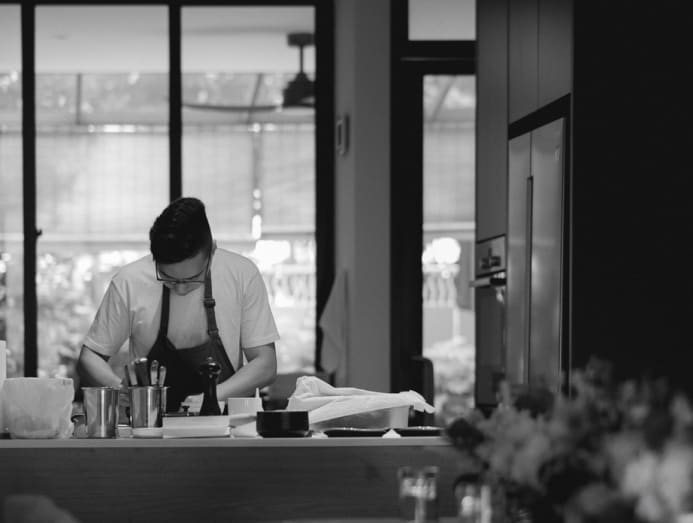
ARE THERE ANY CHEFS, HERE OR ABROAD, THAT REALLY INSPIRE YOU?
I wouldn’t say there is anyone in particular, but everyone whom I’ve worked for or worked with over the years has inspired me. Especially my peers who started out being mere colleagues who eventually became people I can call as my closest friends—many of which have carved their own path to passionately pursue their own ventures. Some of these friends include Maxine Ngooi of Tigerlily, whom I worked with at Les Amis, as well as Ethel Hoon of Kloesterle Restaurant, who operates the restaurant with her husband Jakob in the alpine town of Zug in Austria.
HOW DID THE PANDEMIC AFFECT YOUR BUSINESS?
Being a home-based business operating out of a private home, the heightened restrictions limiting unique visitors per household really did put a strain on existing guest commitments. Many reschedules had to be made, especially when there were two-pax restrictions for a substantial part of the year. With prep work that only has economies of scale for larger groups, it wasn’t as feasible to operate dine-in. Like many other home-based private dining businesses, I had to pivot to takeaway offerings for a period of time.
That being said, the ‘forced’ downtime was a good time to rest and reset whilst pursuing R&D for new dishes.
ANY PLANS TO OPEN A RESTAURANT?
In short, the answer is I’m not quite ready to open one as yet, but definitely keen to explore it in the future. Not nearly enough people truly understand how difficult it is to open a restaurant and what it entails. To me, owning and running a restaurant is a great privilege and with that privilege comes immense responsibility.
If I were to open a restaurant in the future, it’ll only be because I’m in the right headspace and have the financial means to do so. I want to create a restaurant with a supportive working culture, where chefs are not only passionate about their craft, but are inspired by each other to grow their career, and at the end of the day, serve simply delicious food.
WHAT ARE YOUR GOALS FOR 2022?
To grow as a chef by honing my craft while surprising and delighting guests by showcasing local ingredients in a uniquely kanves way. Achieving all of this whilst still maintaining a healthy dose of work life balance, as I feel it’s extremely important to make sure I don’t get burnt out and lose my passion, especially when lines sometimes get blurred when work is home and home is work.










